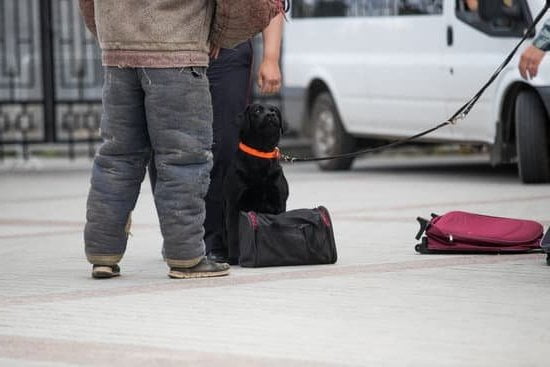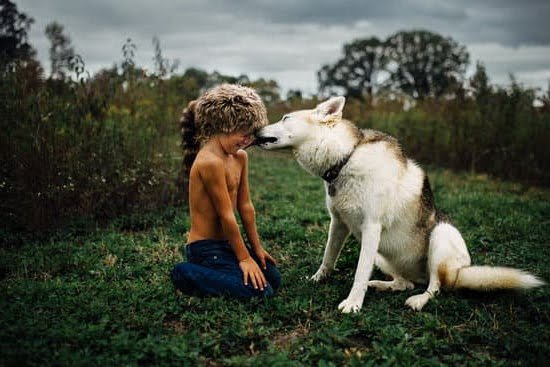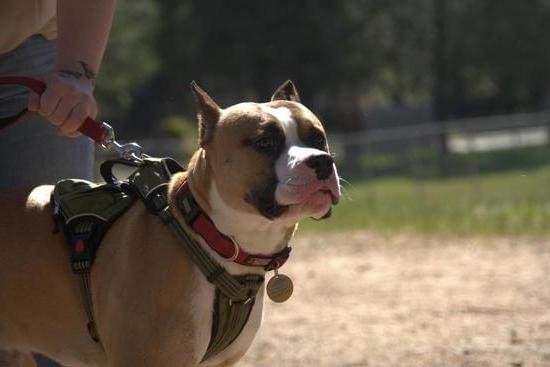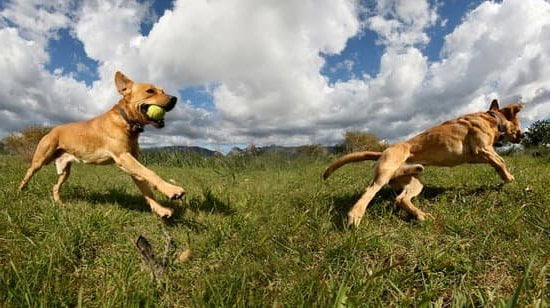Are you struggling with how to train your dog to like their crate? Crate training can be a valuable tool for both you and your furry friend, providing a safe and comfortable space for them when needed. In this article, we will explore the benefits of crate training for dogs and provide helpful tips on how to make the crate a positive and enjoyable space for your pet.
Crate training offers numerous benefits for both you and your dog. It can serve as a safe haven for your pet, providing them with their own personal space to relax and unwind.
Additionally, crates can aid in house training by encouraging bladder control and minimizing destructive behavior when you are unable to supervise your dog. Understanding the advantages of crate training will help you approach the process with a positive mindset, knowing that it ultimately promotes your dog’s well-being.
In this article, we will delve into the various aspects of crate training, starting with understanding why some dogs may dislike crates.
We will then discuss how to choose the right crate for your dog’s needs, create a positive association with the crate using treats and toys, gradually introduce your dog to the crate, establish a routine involving the crate, address separation anxiety, troubleshoot common issues that may arise, and emphasize the importance of patience and consistency throughout the training process.
By following these guidelines, you can effectively train your dog to embrace their crate as a comfortable and secure space.
Understanding Your Dog’s Behavior
When it comes to crate training your dog, it’s important to understand that not all dogs will immediately take to their new “den.” There are several reasons why some dogs may initially dislike being confined to a crate.
One common reason is that the dog has not been properly introduced to the crate and sees it as a form of punishment or confinement. Another reason could be that the dog has had a negative experience in a crate in the past, leading to fear or anxiety associated with it.
It’s also important to recognize that some dogs simply have a natural aversion to small, enclosed spaces. This can be especially true for more independent or anxious breeds. Understanding your individual dog’s behavior and temperament is crucial in addressing their reluctance towards the crate.
In addition, some dogs may resist crate training because they have separation anxiety, which can lead to distress when left alone in a confined space. Recognizing signs of separation anxiety such as excessive barking, whining, or destructive behavior can help you address this issue effectively. To overcome your dog’s aversion to the crate, patience and understanding are key. Here are some tips on how to train your dog to like the crate:
- Introduce the crate gradually, allowing your dog to explore and become familiar with it at their own pace.
- Use positive reinforcement such as treats and favorite toys to create a positive association with the crate.
- Make sure the crate is comfortable by adding bedding and ensuring proper ventilation.
- Spend time near the crate with your dog, engaging in calming activities such as reading or gentle petting, so they associate it with positive experiences.
- Be consistent in providing meals and nap time inside the crate, helping them see it as a safe and comfortable space.
Choosing the Right Crate
When it comes to crate training your dog, choosing the right crate is essential to ensure your dog feels comfortable and secure. The size of the crate is crucial, as it should be large enough for your dog to stand up, turn around, and lay down comfortably.
A crate that is too large may not provide the cozy den-like environment that dogs instinctively seek, while a crate that is too small can make your dog feel cramped and anxious. Consider your dog’s full-grown size when selecting a crate, and if you have a puppy, choose a crate with an adjustable divider to accommodate their growth.
In addition to size, the material and comfort of the crate are also important factors to consider. Some dogs may prefer wire crates that allow for better ventilation and visibility, while others may feel more secure in plastic crates that provide more privacy. Take into account your dog’s preferences and behaviors when choosing the material of the crate. Regardless of the material, ensure that the crate has a comfortable mat or bedding for your dog to rest on.
It’s also worth noting that some dogs may have allergies or sensitivities to certain materials, so it’s important to observe any adverse reactions when introducing a new crate. Keep an eye on how your dog responds to the material of the crate and make adjustments as needed. By carefully considering these factors, you can help create a positive association between your dog and their crate.
| Crucial Factors | Considerations |
|---|---|
| Size of Crate | Large enough for comfort but not too big |
| Material of Crate | Wire for ventilation or plastic for privacy |
| Comfort Inside Crate | Provide comfy bedding or mat |
Creating a Positive Association
Crate training can be an effective way to provide your dog with a safe and comfortable space while also promoting good behavior. However, many dogs initially resist the idea of being confined in a crate. In order to help your dog overcome this aversion, it’s important to create a positive association with the crate.
One of the most effective ways to do this is by using treats and toys. By offering these incentives, you can help your dog see the crate as a positive and rewarding place rather than a punishment or confinement. Here are some tips for using treats and toys to create a positive association with the crate:
- Use high-value treats: Choose treats that your dog absolutely loves and only give them when they are near or inside the crate. This will help your dog associate the crate with something special and enjoyable.
- Incorporate toys: Place your dog’s favorite toys inside the crate to make it more inviting. You can also give them a new toy that they’ve never seen before as an extra incentive for exploring the crate.
- Gradually increase time spent in the crate: Start by giving treats or toys near the open door of the crate, then gradually move them further inside as your dog becomes more comfortable. Eventually, start closing the door for short periods while giving treats or allowing playtime with their toys.
By using treats and toys in this way, you can show your dog that being in the crate is not only tolerable but also enjoyable. With patience and consistency, you can train your dog to like their crate and even see it as a comfortable den of their own.
Gradual Introduction
Starting With Short Periods
When training your dog to like the crate, it’s important to start with short periods of time in the crate. Begin by leaving the crate door open and allowing your dog to explore it at their own pace. Place some treats or a favorite toy inside to encourage them to go in.
Once they are comfortable going in and out, start closing the door for just a few seconds at a time. Gradually increase the amount of time the door is closed, always staying nearby to reassure your dog and let them out if they become anxious.
Positive Reinforcement
As you gradually introduce your dog to the crate, use positive reinforcement to help them associate it with something pleasant. Whenever your dog willingly goes into the crate, offer praise and reward them with a treat or some extra attention. This will help them view the crate as a positive space rather than something to be feared.
Building Up to Longer Periods
Once your dog is comfortable spending short amounts of time in the crate with the door closed, you can begin to build up to longer periods. Start by leaving them in the crate while you are at home for short intervals, gradually increasing the length of time they spend inside.
It’s important not to rush this process, as forcing your dog into longer periods in the crate before they are ready can cause anxiety and resistance. Take it slow and always make sure your dog has everything they need – water, toys, and a comfortable bed – to keep them content while inside.
Setting a Routine
Feeding Your Dog in the Crate
One way to build a positive association with the crate is to feed your dog their meals inside it. Start by placing your dog’s food bowl at the back of the crate, encouraging them to enter on their own. You can also use treats to lure them inside and praise them when they go in.
Over time, you can gradually move the bowl towards the front of the crate, eventually closing the door while they eat. This will help your dog see the crate as a place where good things happen.
Nap Time in the Crate
In addition to feeding your dog in the crate, you can also encourage them to take naps inside it. After a play session or exercise, your dog may naturally want to rest. Encourage them to do so inside their crate by placing a comfortable bed or blanket inside. You can also use calming toys or chew treats to help them relax and associate the crate with relaxation and comfort.
Consistency Is Key
It’s important to be consistent with using the crate for meals and nap time. By incorporating it into your dog’s daily routine, they will start to see it as a normal and positive part of their day-to-day life. Consistency will also help reinforce good behavior and make it easier for your dog to feel comfortable and secure in their crate.
By setting a routine for using the crate for meals and nap time, you can help train your dog to like their crate and see it as a safe and enjoyable space. Be patient, consistent, and positive in your approach, and soon enough, your dog will come to love their crate as their own special den.
Addressing Separation Anxiety
One of the most common reasons why dogs dislike crates is the anxiety they feel when separated from their owners. This can lead to behaviors such as whining, barking, and even attempts to escape from the crate. To address this issue, it’s important to help your dog feel secure and comfortable in the crate, especially when you’re not around.
To train your dog to like the crate despite separation anxiety, start by making the crate a positive and safe place for them. You can do this by placing their favorite toys and blanket inside, as well as giving them special treats whenever they go into the crate voluntarily. This will help create a positive association with the crate and reduce their anxiety about being confined.
Another effective way to address separation anxiety is to gradually increase the time your dog spends in the crate while you are away. Start by leaving them alone for just a few minutes at a time, then gradually extend the duration as they become more comfortable. It’s important not to rush this process, as forcing your dog into long periods of confinement too soon can exacerbate their anxiety rather than alleviate it.
It’s also helpful to practice leaving your dog in the crate for short periods multiple times throughout the day, even when you’re at home. This will help them understand that being in the crate doesn’t always mean you’re leaving them alone for an extended period. By following these steps and being patient with your dog, you can help them feel more secure in their crate and ultimately overcome their separation anxiety.
| Topic | Details |
|---|---|
| Making Crate Positive | Place favorite toys and blanket inside Give special treats when entering voluntarily |
| Gradual Increase in Time | Start with short durations Gradually extend time as dog becomes more comfortable |
| Daily Practice | Practice short periods multiple times daily Even when at home |
Troubleshooting
One common issue that dog owners may face when crate training their dog is resistance or fear towards the crate. Dogs may show signs of anxiety, whining, or even attempt to escape when placed inside the crate. This can be frustrating for pet owners, but it’s important to understand that this is a normal part of the process. With patience and consistency, these issues can be overcome.
First, it’s essential to assess if the chosen crate is suitable for your dog. The size of the crate should provide enough space for your dog to stand up, turn around and lie down comfortably. Additionally, the material of the crate should be sturdy and safe for your dog. If your dog shows aversion to the crate, it might be worth considering trying a different type of crate to see if that helps alleviate their anxiety.
Another common issue when crate training a dog is their reluctance to enter the crate even with positive reinforcement. In this case, it’s important to make sure that you are using high-value treats and toys as incentives for your dog.
This could include treats that they absolutely love or a special toy that they only get access to when they are in the crate. Creating a positive association with the crate through rewards will help them feel more comfortable being inside it.
Lastly, some dogs may display signs of separation anxiety when placed in a crate, especially if they have not been properly acclimated to spending time alone in this way. In this case, it’s important to slowly desensitize your dog to being alone in the crate by gradually increasing the time they spend inside it while you are at home before leaving them alone for extended periods.
Additionally, providing comfort items such as blankets or clothing items with your scent can help reassure them while you’re away.
In troubleshooting these common issues during crate training, remember that patience and consistency are key. Every dog is different and may require varying methods of training so don’t get discouraged if progress seems slow at first – with time and persistence, most dogs can learn to enjoy spending time in their crates.
Conclusion
In conclusion, crate training can be a beneficial tool for both you and your dog when done correctly. By understanding your dog’s behavior and needs, choosing the right crate, and creating a positive association with treats and toys, you can gradually introduce your dog to the crate in a way that makes them feel safe and secure. It is important to remember that patience and consistency are key in this process.
The gradual introduction of the crate, setting a routine for meals and nap time, and addressing any separation anxiety your dog may have are all important steps in ensuring that they will come to like their crate. Additionally, being prepared to troubleshoot any common issues that may arise during training will help make the process smoother for both you and your pet. By following these steps, you can successfully train your dog to like their crate.
Overall, it is crucial to understand that each dog is unique and may require different approaches when it comes to crate training. What works for one dog may not work for another.
Therefore, it is important to be patient and consistent in your efforts as you train your dog to like their crate. With time and effort, most dogs can learn to not only tolerate their crates but even come to see them as a safe haven where they can relax and feel at ease.
Frequently Asked Questions
How Do You Crate Train a Dog Who Hates the Crate?
Crate training a dog who hates the crate requires patience and positive reinforcement. Start by making the crate a comfortable and inviting space, using treats and toys to create positive associations. Slowly increase the time spent in the crate to help them adjust.
How Long Does It Take for a Dog to Like His Crate?
The time it takes for a dog to like his crate can vary depending on the individual dog. Some dogs may start to feel comfortable within a few days, while others may take weeks or even months. It’s important to be consistent and patient during the crate training process.
How Do I Train My Dog to Be Calm in His Crate?
To train your dog to be calm in his crate, start by ensuring that the crate is a positive environment with comfortable bedding and enticing toys. Gradually increase the amount of time they spend in the crate, rewarding calm behavior with treats or praise. It’s also important to provide plenty of exercise and mental stimulation outside of crate time.

Welcome to the blog! I am a professional dog trainer and have been working with dogs for many years. In this blog, I will be discussing various topics related to dog training, including tips, tricks, and advice. I hope you find this information helpful and informative. Thanks for reading!





